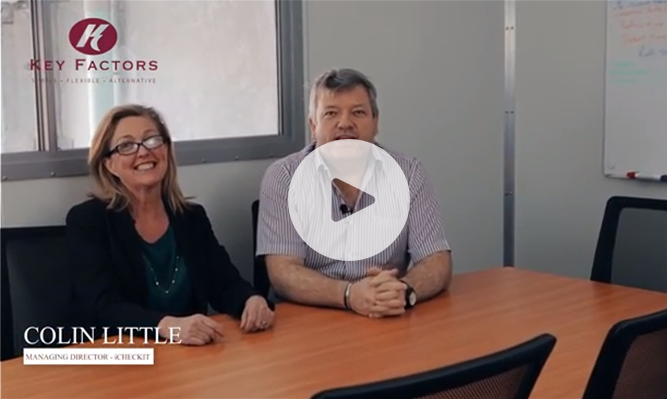Cash Flow Management Tips in 5 Easy Steps
By Ram - Apr 12 2024
Cash flow is the lifeblood of any business and is vital to its ongoing success. However, while some businesses are profitable, they don’t have proper cash flow, and most entrepreneurs and business owners understand that managing it effectively is one of the biggest challenges, especially for small-to-medium enterprise owners. However, it is not impossible. With a few tips, you can improve your cash flow management and put your business back on the map to success.
What is Cash Flow?
Cash flow refers to the amount of cash that goes in and out of a company’s accounts during a given time. There are three different types of cash flow you will find on a cash flow statement, and each has its essence:
- Cash flow from operations is money generated, spent, or lost during the company’s primary business activities.
- Cash flow from investments: The company generates money from the purchase and sale of long-term investments such as property, buildings, and equipment.
- Cash flow from financing: This category includes all flows related to raising cash and paying back debts to investors and creditors.
Can Cash Flow Be Negative?
A company’s net cash flow is the sum of the three positive or negative figures. Therefore, cash flow can turn negative. When this happens, it means more cash is leaving the company than is coming in.
Although this doesn’t mean the business is making losses, it can spell financial trouble, so you need to improve your cash flow management to ensure your business gets a positive cash flow.
What is Cash Flow Management?
The importance of cash management lies in understanding why cash flow is crucial to business management. A positive cash flow indicates that the business generates enough cash to meet its expenses, service its debts, and invest in growth opportunities.
Even if a company is profitable, a negative cash flow could hinder its chances of scaling its operations. A negative cash flow is also one reason some start-ups fail.
Therefore, ensuring effective cash flow management practices is essential in meeting the following objectives:
- Improve liquidity management by eliminating unnecessary expenses and minimising operating costs
- Closely monitoring cash spending, strategically planning investments and improving resource allocation.
- Meeting your payables and debt obligations strengthens financial discipline and stakeholder relationships and fosters credibility.
- Reducing the risk of Insolvency by encouraging the creation of emergency funds and streamlining cash flows.
Cash Flow Management Tips in 5 Easy Steps
Cash flow management might sound robust, especially for small to medium businesses. But there are simple tips you can start with that could significantly boost your cash flow.
-
Modernise Sales Invoice Processing
One primary way to raise cash flow is through your primary operations. One of the ways you can improve your cash flow is by modernising your invoice processing to help you predict cash flow. Some of the ways you can do this include:
Focus on reducing late payments
Many small to medium businesses struggle with getting their clients to pay their invoices on time, which impacts their liquidity and cash flow. You can improve your account receivables turnover and reduce late payments by:
- Offering early payment discounts
- Shortening payment terms
- Issuing accurate invoices on time
- Building strong client relationships
- Following up on late payments
Automate invoice processing
Automating sales invoices is one area of improvement to the collection process that could massively enhance cash management. It ensures you send invoices on time, which increases the chances of customers paying them on time.
-
Ensure Financial Data Reliability
Accurate and reliable financial data will help you make financial decisions. Management often needs more time for cash flow statements and other financial reports. Raw data is almost always messy, making it harder for smaller teams to prepare reports on time. Here are a few tips on how you can improve financial data reliability.
Make financial forecasts the most accurate.
Many companies make decisions based on outdated or incorrect financial information. Human errors, multiple data sources, and a lack of automated controls are among the factors contributing to uninformed decisions and cash flow problems. Investing in an automated system like accounting software can help organise information and give the business a better financial forecast.
Make financial reporting more efficient with smart technology
Make collection and analysing of data more efficient through automation. It speeds up the process and improves the accuracy of financial reports such as cash flow statements.
-
Simplify Invoice Approval Workflows
In procurement, manual data entry and inefficient processes are problems followed closely by unclear or lengthy requisition or approval processes. You can improve this by:
Improving invoice visibility
An efficient expense management workflow is necessary to enhance the company’s cash-handling abilities.
Finance leaders need visibility on all company expenses and invoices across the workflow. Avoid having inconsistent and multiple approval processes across the business to make tracking cash flow easier.
Manage cash flow by tightening expense control
Having a single approval workflow is another step companies can take to fix cash flow issues. Ensure all your invoices go through single approval channels to allow managers to check what expenses are in the pipeline. Visibility allows businesses to reduce cash reserves and optimise working capital.
-
Create a Single Source of Information
Companies need to have one source of detailed financial information that they can use to make decisions. Having multiple, reliable sources of information can lead to clarity and over-estimation.
You should set up clear audit trails to reduce back-and-forth emails, approve invoices on time, provide a detailed account of actions taken, allow management to review past transactions, and make accurate calculated forecasts.
-
Perform a Spend Analysis
Finally, track how much cash goes into every expense category, cut non-strategic expenses and impose budget cuts on areas that will not negatively impact the business operations.
Consider implementing strategic budget cuts and investing in an intelligent expense management system that provides insight and transparency into where and how spending happens in one solution.
Summary
Cash flow management can be a difficult topic for many businesses. However, automation and invoice management are key factors you should consider when trying to improve your business’s cash flow.

